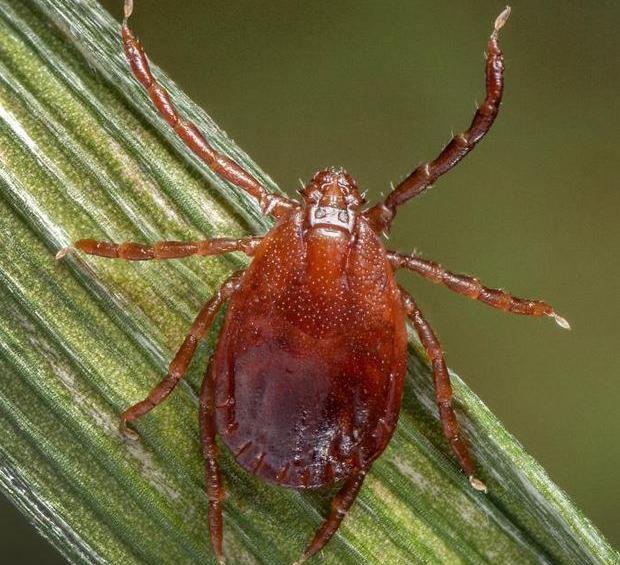Longhorned tick (Haemaphysalis longicornis) Surveillance
Background information
The longhorned tick, also known as the cattle tick or bush tick, is native to eastern Asia. The tick has become invasive in several countries including Australia and New Zealand, and now the United States where it is an important parasite of cattle. It is also of concern to the cattle industry as it is a vector of Theileria orientalis. Also, some infested animals may develop very high tick burdens. There are some life history traits of H. longicornis that enhance its invasive potential. It has a broad geographic range and nymphs and adults are able to enter diapause (suspended development) or overwinter in colder environments. Further, H. longicornis has a wide host range including humans, cattle, dogs, horses, and small ruminants as well as a wide variety of wild and feral species such as carnivores, cervids, feral pigs, rodents, and several bird species. Finally, some populations of H. longicornis are capable of asexual reproduction (parthenogenesis), in which adult female ticks can produce fertile eggs without contact with male ticks. Therefore, a single female tick introduced to a new area can start an entirely new population. This exotic Asian tick species first was confirmed in the United States in November 2017 following its collection from a domestic sheep and its caregiver in Hunterdon County, New Jersey. Beginning that fall, SCWDS and multiple other organizations began collaborative surveillance for the tick to determine if it had become established. By Spring 2018 the tick was confirmed to still be present in New Jersey and soon after was noted in new geographic regions and on new hosts.
For more information
Publicly available records of H. longicornis have been collated and shown on this map of the distribution. This interactive map shows reports at the county level and can be easily sorted by user-defined region, state, host or year.
How you can help
SCWDS is conducting regional surveillance for this tick through collaborations with various agencies. All of these ticks are being submitted to SCWDS for identification and future inclusion in studies on the population genetics of H. longicornis and pathogen testing. If you are interested in participating, please contact [email protected].
